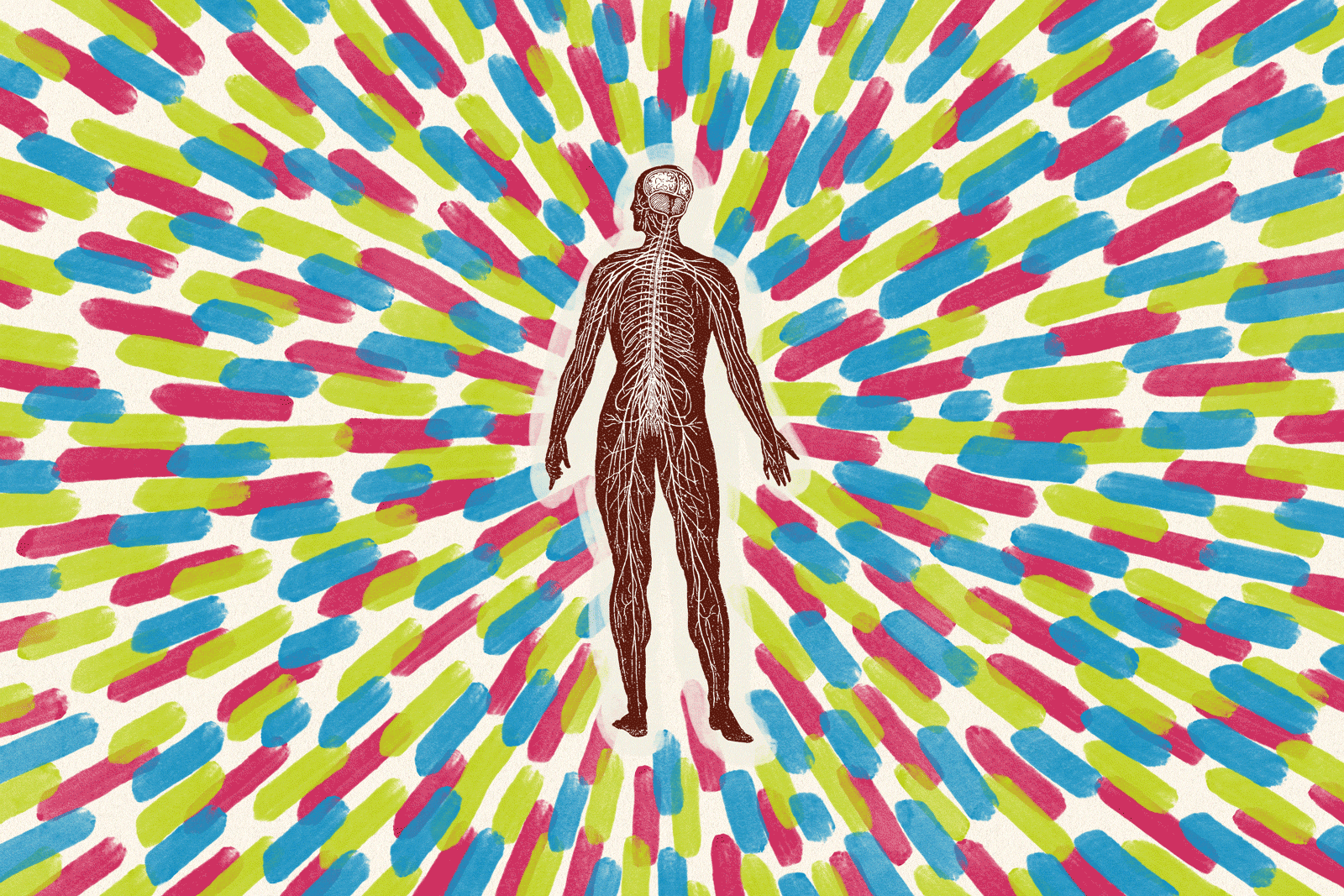Still, the Stigma Remains
- Share via
Nina Wouk’s early childhood was marked by trouble in school, anxiety attacks and hallucinations. Things got worse in her teens when she was diagnosed with schizophrenia and sent to mental hospitals, where she spent years “totally numb” from the effects of powerful drugs.
Her symptoms gradually abated, and, with great difficulty, she weaned herself from medications. By her late 20s, Wouk began picking up the pieces of her life, though the label of ex-mental patient hampered her efforts: Employers were reluctant to give her a chance, and health insurance companies wouldn’t offer coverage.
Today she is a self-described “twitchy” person, with a nervousness that may have resulted from years of taking antipsychotic medications. But the 51-year-old Menlo Park, Calif., woman works in an occupation that is the very symbol of the clearheaded, organized personality that eluded her in her youth: She’s an accountant. She also owns a home and has been in a stable relationship for 22 years.
“I am not a crazed killer,” she says. “In fact, I’m highly typical” of recovered schizophrenics.
Extensive research conducted in this country and abroad indicates that Wouk’s right: The stereotypical tortured souls who wander the streets responding to voices only they can hear are the exception, not the norm.
With the right treatment, more than 75% of diagnosed schizophrenics have a complete or at least functional recovery, experts say. While they may suffer occasional symptoms, they “hold responsible jobs, have relationships and lead satisfying lives,” says Dr. Raquel E. Gur, director of neuropsychiatry at the Schizophrenia Research Center at the University of Pennsylvania School of Medicine in Philadelphia.
Today, an estimated 2.5 million Americans--roughly 1% of the population--are diagnosed with schizophrenia. The illness usually emerges between the ages of 13 and 25 and often appears earlier in males than females. Symptoms include disordered thinking, paranoid delusions, hallucinations, and extreme apathy and social withdrawal. The National Institutes of Health pegs the total costs of the disease, including long-term care, at more than $30 billion annually.
Yet many experts say that our mental health system is ill-equipped to treat people with schizophrenia and that the psychiatric profession clings to outdated notions that patients deteriorate, not improve. It’s no wonder, they say, that one of every 10 schizophrenics commits suicide within 10 years of diagnosis.
Because the disease carries such a profound stigma, those who do recover often live secretive lives, revealing their psychiatric histories only to their closest intimates. So the public seldom hears about the thousands of success stories.
Instead, we usually hear about headline-grabbing cases such as that of Michael Laudor, the charming Yale law graduate who was a poster boy for recovery from schizophrenia. With a movie deal based on his autobiography reportedly in the works, Laudor stabbed to death his 37-year-old pregnant girlfriend in 1998. According to reports, he had stopped taking his medication. The New York State Supreme Court later committed Laudor to a state mental institution for his crime. Although studies show that even severely mentally ill patients, if they receive treatment, are not any more violent than the average person, the negative image persists.
“I spend so much of my time countering negative images; the label discredits and marginalizes people,” says Dr. Dan Fisher, a psychiatrist and former schizophrenic who is co-director of the National Empowerment Center, a patients’ rights organization in Lawrence, Mass.
Indeed, some sufferers, like Wouk or Fisher, seem to go into full remission, meaning they have no symptoms and don’t need to take medications. Others with residual symptoms learn to ignore them.
“I still hear voices, from the refrigerator, the television, the washing machine--all the major appliances,” jokes Bill Compton, who takes medication to control the paranoid delusions that overtook his life when he was 42. Compton, 55, is director of Project Return: The Next Step, a self-help organization for people with mental illnesses.
Compton worked for theater companies in New York and Los Angeles before his psychotic break. He bounced around the mental health system for two years and lived on the street for nine months, convinced that he was waiting to be anointed as an archangel. He landed in a board-and-care home a decade ago, where he began his long climb out of the depths of madness.
Disturbed Patients Were Deemed Hopeless
The public’s pessimistic view of schizophrenia has its origins in the research of Swiss psychiatrist Eugene Bleuler, who coined the term schizophrenia in the early 1900s to describe the disordered thinking, suffocating anxiety, and vivid auditory and visual hallucinations his deeply disturbed patients exhibited. He thought such patients were hopeless. However, his son, Manfred, also a psychiatrist, realized there was a big piece missing from the picture: The patients his father studied remained hospitalized, which is why the disease seemed intractable. When the younger Bleuler tracked down those who had drifted way, he discovered they were leading relatively normal lives.
“But he was dismissed as a cockeyed optimist and his findings discounted,” says Sarnoff A. Mednick, a professor of psychology at USC who has studied schizophrenia.
However, a landmark study that was launched nearly half a century ago confirmed Manfred Bleuler’s observations. In the 1950s, Yale University researchers began following 269 chronic schizophrenics at Vermont State Hospital. The patients, most of whom were middle-aged, poorly educated and had little social support, participated in a comprehensive rehabilitation program.
“The head of the hospital asked the patients what they needed to get out of the hospital, and they told him--jobs, friends and a decent place to live,” recalled Courtenay M. Harding, a member of the Yale research team.
Patients in the Yale study lived in a hospital ward designed to resemble a home-like setting. They received self-help therapy, vocational counseling and jobs, and were linked to family and friends to provide support. When researchers checked back with the patients 20 and 25 years later, they were astonished to find that one-half to two-thirds of the patients showed no signs of schizophrenia, though they may not have been working or were socially isolated. Slightly more than 25% were completely well and had jobs, families and friends.
These were patients who had been considered hopeless, “who had been languishing in the back wards for years and couldn’t dress themselves and had forgotten how to tell time,” said Harding, who is now a professor at the Sargeant College of Health and Rehabilitation Sciences at Boston University.
For less severe patients who receive treatment, the recovery rates might be as high as 90%, Harding said.
“But the belief that schizophrenia is incurable is so deeply embedded,” she noted, “that no amount of facts seem to make a difference.”
Scientists don’t know what causes schizophrenia, but the illness normally appears when the body undergoes hormonal and physical changes in late adolescence and young adulthood. Scientists speculate that people with schizophrenia may have an imbalance of dopamine and serotonin, two key brain chemical messengers that affect the way a person’s brain reacts to sensory stimuli. Consequently, when these people face a crisis or are under stress, their senses become overloaded by sounds, sights, smells and tastes, which can spill over into hallucinations and delusions.
Schizophrenia seems to run in families, too. Compton, for instance, had an uncle with schizophrenia. But genetics doesn’t explain all of it. Scientists believe that disturbances in the creation of normal pathways in the brain--viral infections during pregnancy that can be toxic to the fetus, delivery complications that can deprive the newborn of oxygen--can push those with a genetic vulnerability over the edge. “Somehow, the wiring in the brain gets crossed, making people more prone to symptoms,” said USC’s Sarnoff Mednick.
The good news is that treatment has come a long way from the 1960s and early 1970s, said experts, when the severely mentally ill were written off, given debilitating medications and confined to locked wards.
“I was forcibly drugged and placed in solitary confinement,” said Fisher, who had his first psychotic episode in 1968, when he was a biochemist at the National Institute of Mental Health in Bethesda, Md. “I was so upset, frustrated and frightened,” he recalled of the three times that he was hospitalized for treatment. “That’s when I resolved to become a psychiatrist. I thought if I ever get out of this, I’m going to unlock these doors and provide help in a way that I wish someone had been there for me.”
Typical of that era was the experience of Pearl Johnson, a 71-year-old woman whose life started out with so much promise. An A student who played the saxophone and loved athletics, she ran away from home at age 16. Plagued by intense anxiety, paranoia and auditory hallucinations, she controlled her demons with heroin and other drugs.
Johnson spent the next 45 years on the street or in prison, where she was kept in an isolation cell under heavy sedation and sometimes beaten if she complained. While she was in isolation, her only real companions were the voices in her head.
In 1990, she ended up at Oasis House, a mental health program in South-Central. “Those people loved me to death, and that’s where I began my road to recovery,” said Johnson, now a community worker for the Los Angeles County Department of Mental Health.
Despite the advances in treatment, nearly half of severely mentally ill patients in California avoid treatment, studies have found. For many, the fear of involuntary hospitalization has driven them underground.
“Most people are poorly treated and slip through the cracks of the system,” said Ronald F. Levant, dean of the Center for Psychological Studies at Nova Southeastern University in Ft. Lauderdale, Fla. “They self-medicate, become addicted to drugs or alcohol, and wind up on the streets, where they get beaten up and further traumatized.”
Research indicates that fewer than half of schizophrenics receive any kind of psychological help, only one in four gets vocational help and just 10% receive family therapy. Schizophrenia usually strikes in late adolescence as people are making the transition to adulthood and careers. The emotional damage can be severe as people see their dreams abruptly derailed. Consequently, they need to learn job and social skills, as well as how to manage their symptoms, to take their place in society.
Rehab is not just window dressing, experts said; it’s critical to a person’s recovery.
“The real tragedy is we knew in the 1950s what we needed to do to reclaim lives, yet it hasn’t been applied,” said Harding, the Boston University professor. “But there are pockets of excellence.”
The Mental Health Assn. in Los Angeles County, for instance, a private nonprofit agency, oversees a number of model programs that help people with mental illnesses become self-reliant. The MHA Village in Long Beach offers a comprehensive treatment program that includes counseling, substance abuse recovery, employment and even money management classes to its 500 participants, about half of whom are schizophrenics.
Project Return: The Next Step, another MHA-funded program, is a network of 75 self-help clubs throughout Los Angeles that are operated by people with severe mental illness. The clubs offer peer support, social activities and part-time positions that provide a toehold into the work force for many of its member.
“People need to have services they can connect to,” said Project Return’s Compton. “Once they do, they can turn their lives around.”
(BEGIN TEXT OF INFOBOX / INFOGRAPHIC)
Getting Help
The National Mental Health Assn.: (800) 969-NMHA.
* The Mental Health Assn. in Los Angeles County: (213) 413-1130.
* Office of Consumer Affairs, Los Angeles County Department of Mental Health: (213) 637-2370.
* National Institute of Mental Health: (301) 443-4513 or https://www.nimh.nih.gov.
* National Alliance for the Mentally Ill: (800) 950-NAMI or https://www.nami.org.
* The National Empowerment Center, a patients’ rights organization: (800) 769-3728.
* Support Coalition International, a patients’ rights group: (877) 623-77433 or https://www.mindfreedom.org.
(BEGIN TEXT OF INFOBOX / INFOGRAPHIC)
Warning Signs
There is no test for schizophrenia, and doctors make a diagnosis based on symptoms. Here is a list of some of the early warning signs of schizophrenia:
* Hearing or seeing something that isn’t there.
* Constant feeling of being watched.
* Peculiar or nonsensical way of speaking or writing.
* Feeling of indifference about important situations.
* Deterioration of academic or work performance.
* Changes in personal hygiene and appearance.
* Personality changes.
* Increasing withdrawal from social situations.
* Irrational, angry or fearful response to loved ones.
* Inability to sleep or concentrate.
* Inappropriate or bizarre behavior.
* Extreme preoccupation with religion or the occult.
Source: National Mental Health Assn.






